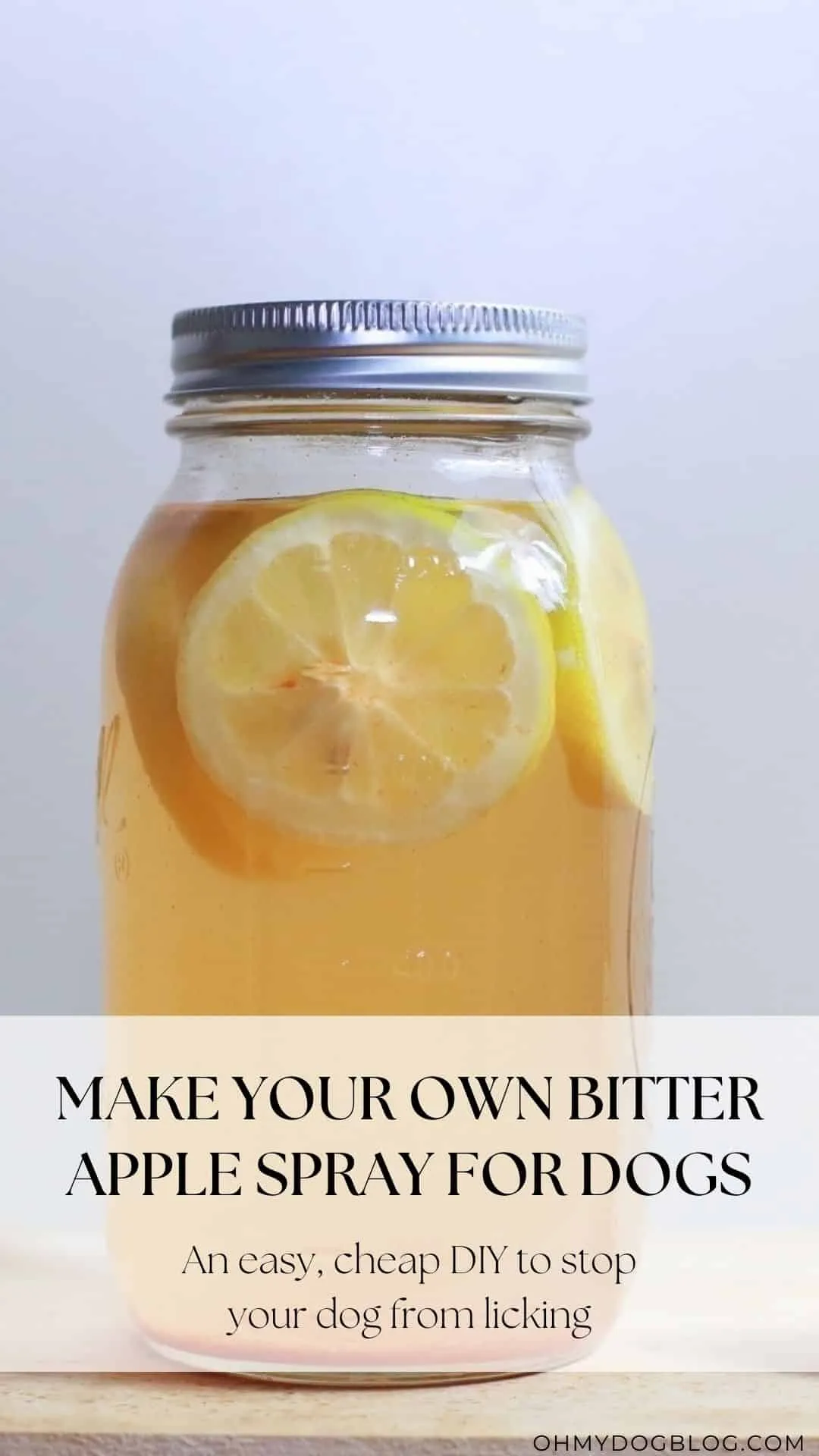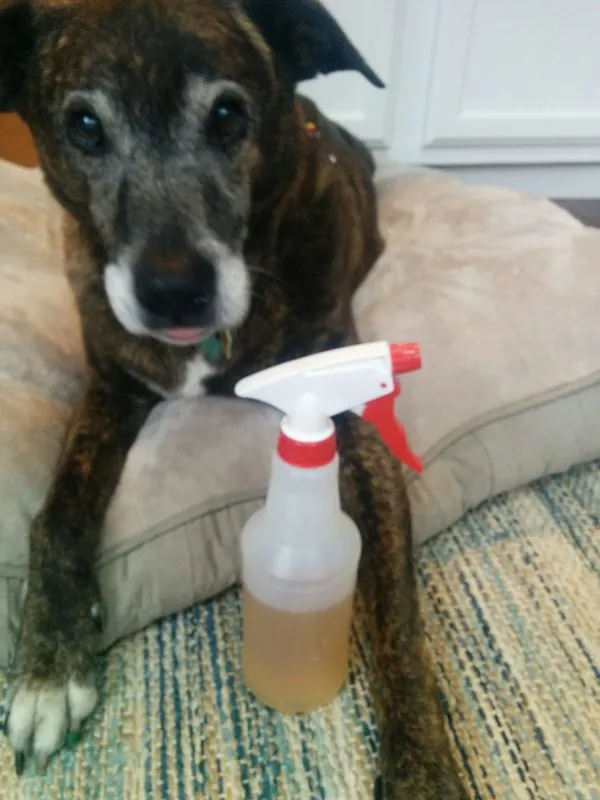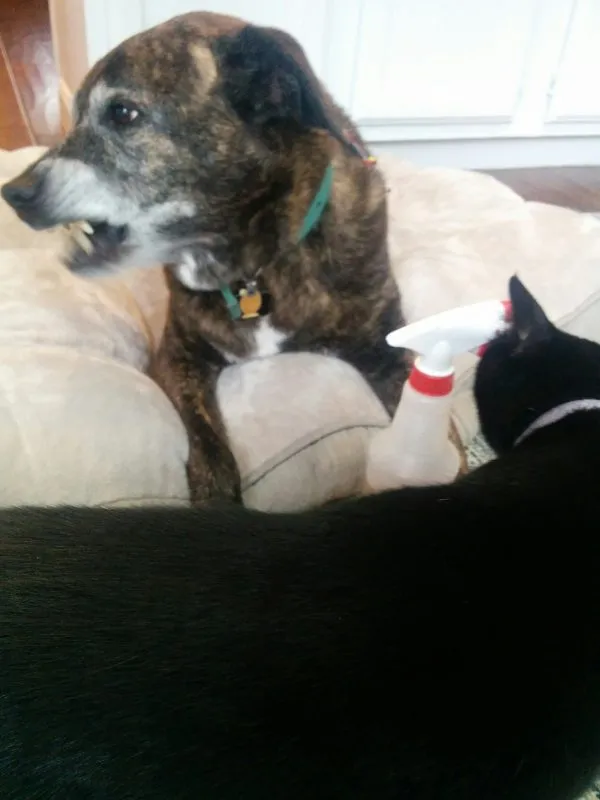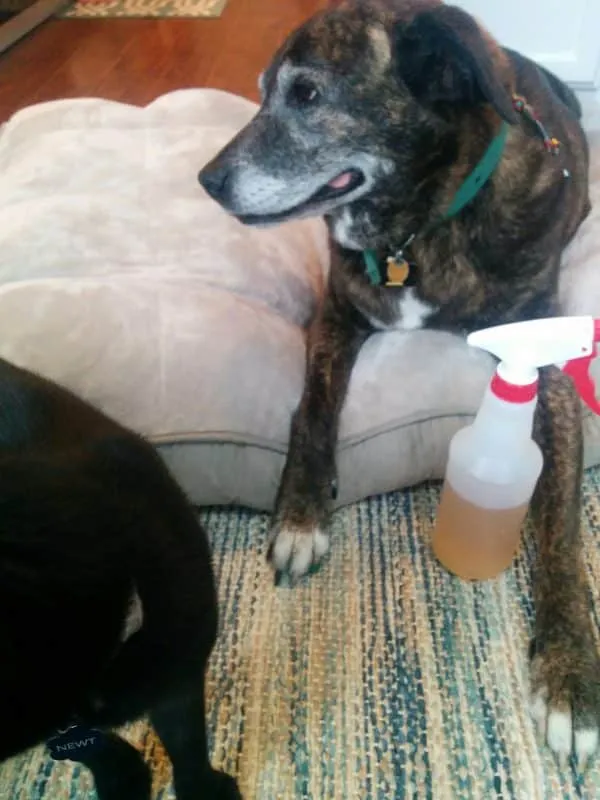Dealing with a dog who just won’t stop chewing furniture, destroying household items, or persistently licking a wound? Many dog owners find themselves searching for effective deterrents. While commercial options abound, creating your own Bitter Spray For Dogs at home offers a simple, cost-effective, and potentially safer alternative. This guide will walk you through making a powerful, natural deterrent that can help curb undesirable behaviors.
Why Choose a Homemade Bitter Spray for Dogs?
When it comes to addressing a puppy’s incessant chewing or a dog’s persistent licking of a hotspot or wound, a good deterrent spray can be a game-changer. Many commercial bitter sprays contain ingredients like rubbing alcohol, which, while often deemed harmless, might not be ideal for something your dog will inevitably lick. A homemade version allows you to control the ingredients, ensuring they are natural and generally safe for your furry friend, even if they get a taste. Not only is it a safer option, but it’s also incredibly economical, costing significantly less than store-bought varieties. Plus, it takes less than two minutes to whip up, making it a convenient solution for busy pet parents.
Gather Your Simple Ingredients
The beauty of this DIY bitter spray for dogs lies in its simplicity and readily available ingredients. You likely already have most of them in your pantry!
Here’s what you’ll need:
- White vinegar
- Apple cider vinegar (regular, inexpensive kind is perfectly fine)
- Water
- A measuring cup
- A spray bottle (glass bottles are an excellent eco-friendly choice)
Optional additions for enhanced deterrence:
- Fresh lemons (note: some dogs enjoy the taste of lemon, so this might not work for all)
- Dried hot pepper, such as cayenne pepper, for an extra kick
Step-by-Step Guide to Making Your DIY Bitter Spray
Making your own deterrent spray is incredibly straightforward. The key is to get the right ratio for maximum effectiveness.
- Determine Your Quantity: Decide how much spray you need. For a standard batch, aim for a 2:1 ratio of white vinegar to apple cider vinegar. For example, if you want one cup of the vinegar mixture, you’d use 2/3 cup of white vinegar and 1/3 cup of apple cider vinegar.
- Mix the Vinegars: Using your measuring cup, pour in 2/3 cup of white vinegar. Then, top it off to the one-cup line with apple cider vinegar.
- Transfer to Spray Bottle: Carefully pour the vinegar mixture into your chosen spray bottle. A funnel can be helpful if you tend to be a bit messy.
- Consider Optional Additions:
- Lemon Juice: If you want to add a sour citrus note, squeeze half a lemon and add the juice to the bottle. Shake well. However, be aware that some dogs, like Emmett in our story, don’t mind the taste of lemon, which could make them more interested.
- Dilution for Sensitivity or Wood: If you plan to apply the spray directly to your dog’s skin (e.g., for a wound he keeps licking, you might also want to consult our article on best oils for dogs skin) or to delicate wooden furniture, it’s wise to dilute the mixture. Add an equal amount of water as the white vinegar you used (e.g., another 2/3 cup of water). While vinegar is generally safe for wood finishes, testing a small, inconspicuous spot first is always recommended for valuable items.
That’s it! Once mixed, give the bottle a good shake, and your homemade bitter spray for dogs is ready for action.
How to Use and Reapply Your Dog Deterrent
Using your DIY bitter spray effectively requires a bit of consistency and understanding of your dog’s reactions.
 A clear glass Ball jar of apple cider vinegar and lemon slices is centered in the frame with a text overlay that reads: Make your own bitter apple spray for dogs. An easy, cheap DIY to stop your dog from licking.
A clear glass Ball jar of apple cider vinegar and lemon slices is centered in the frame with a text overlay that reads: Make your own bitter apple spray for dogs. An easy, cheap DIY to stop your dog from licking.
Application:
Spray a light, even coat on the object or area you want to deter your dog from chewing or licking. For self-licking behaviors, gently spray a thin layer onto the affected area of your dog’s fur, ensuring it doesn’t get into open wounds or eyes. Always observe your dog’s reaction. The goal is to make the taste unpleasant enough to discourage the behavior without causing distress.
 A golden retriever, Emmett, is captured in mid-sniff, looking directly at the camera with an inquisitive expression, seemingly reacting to the scent of the bitter spray.
A golden retriever, Emmett, is captured in mid-sniff, looking directly at the camera with an inquisitive expression, seemingly reacting to the scent of the bitter spray.
Reapplication:
The effectiveness of the spray will diminish over time, especially on frequently touched surfaces or if your dog manages to lick it off. Reapply the spray regularly, perhaps daily or every few hours, until your dog learns to avoid the treated area. Consistency is crucial for success.
 Emmett the golden retriever shows a dramatic facial expression of disgust and distaste, with his mouth slightly open and ears back, reacting strongly to the bitter taste.
Emmett the golden retriever shows a dramatic facial expression of disgust and distaste, with his mouth slightly open and ears back, reacting strongly to the bitter taste.
Storage:
If you’ve added lemon juice to your mixture, it’s best to store the spray in the refrigerator to maintain its freshness and potency. Otherwise, a cool, dark place is sufficient.
 Emmett the golden retriever is captured in a humorous moment, seemingly shaking his head or trying to dislodge the unpleasant taste from his mouth, confirming the spray's effectiveness.
Emmett the golden retriever is captured in a humorous moment, seemingly shaking his head or trying to dislodge the unpleasant taste from his mouth, confirming the spray's effectiveness.
This homemade bitter spray for dogs is a powerful tool in your training arsenal. It offers a safe and effective way to teach your dog boundaries and protect your belongings from destructive chewing or obsessive licking.
Conclusion
A homemade bitter spray for dogs is an incredibly simple, natural, and effective solution for common canine behavioral challenges like destructive chewing and persistent licking. By leveraging the deterrent power of vinegar, you can create a safe, cost-efficient alternative to commercial products. Remember to be consistent with application and observe your dog’s reactions to ensure the best results. This DIY approach not only saves you money but also gives you peace of mind knowing exactly what ingredients are being used around your beloved pet.
For more tips on dog care and training, explore other articles on Dog Care Story, including advice on choosing a leather dog collar and leash for effective training.
